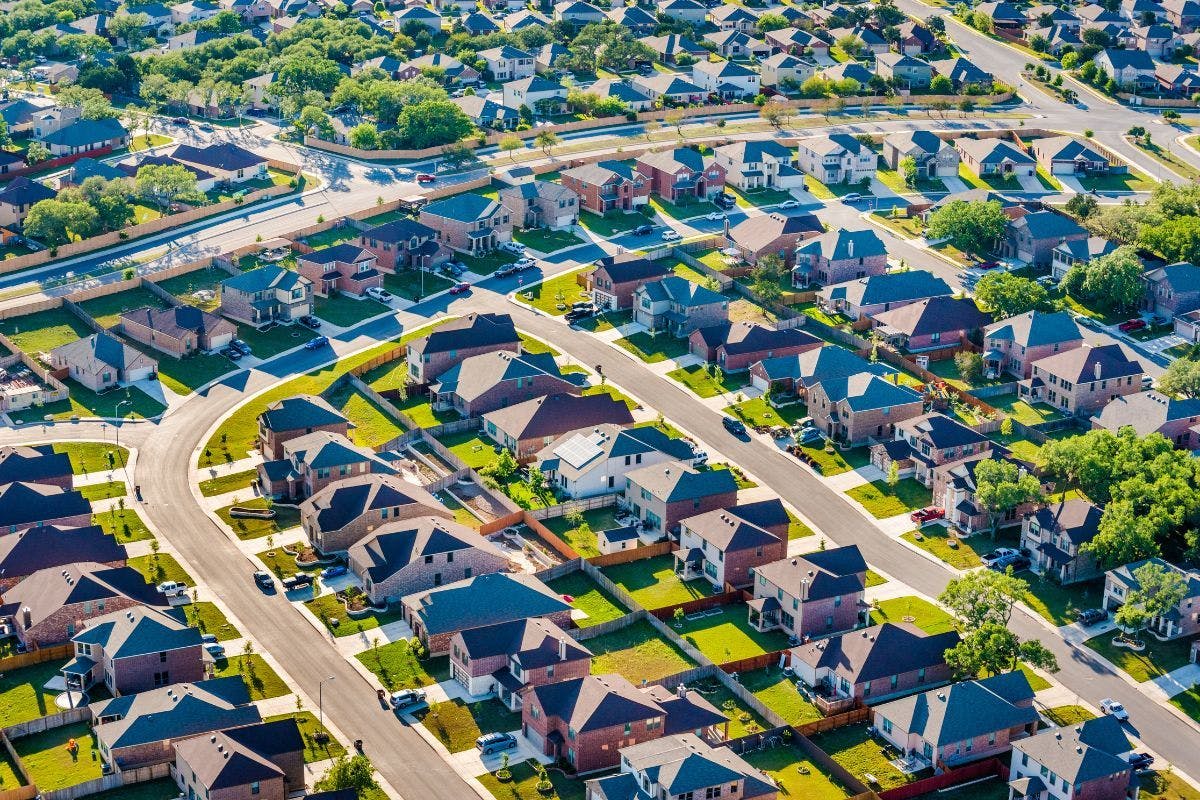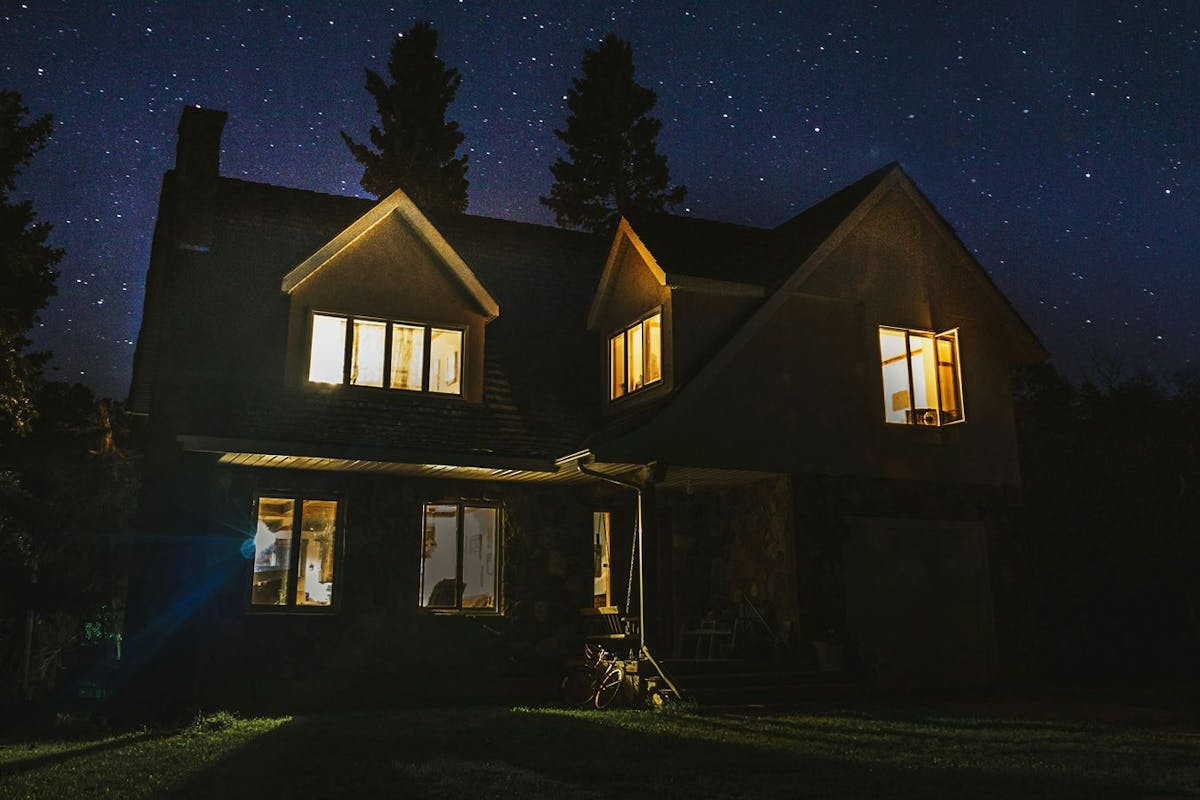Solar Shingles vs Solar Panels
Last edited

Author
Andrew Giermak
Solar and Electrification Writer and Editor

Editor
Andrew Blok
Electrification and Solar Writer and Editor

Solar shingles have long felt like the next big thing in rooftop solar power for homes. They combine the bill savings of rooftop solar panels and the practical benefits of a regular roofing shingle.
Still, solar shingles typically come at a higher cost than solar panels. So when should you spring for the more expensive solar shingles and when should you opt for the more mainstream solar panels? Here's what you need to know.
See how much you can save by going solar with Palmetto
What Are Solar Shingles?
Solar shingles, also known as solar tiles, solar roofs, or solar roofing, are products that generate solar electricity while looking and acting like roof tiles or shingles. Instead of being installed on top of your roof, they're installed as your roof. Solar shingles can partially or completely replace the materials on a home roof with subtle, electricity-generating devices.
Many people know of the Tesla Solar Roof product, which may have the most name recognition of the solar shingle options.
More recently companies have introduced new products, like GAF Energy with its Timberline Solar shingle, which can be installed just like traditional roofing material without additional solar power expertise. Jackery, a leader in portable energy products, debuted curved solar roof tiles at CES 2025 in Las Vegas in January. The tiles should be available in the U.S. sometime in 2025.
Solar shingles are still a relatively new product in the residential renewable energy industry and may give homeowners more options to save money with solar power.
How Much Do Solar Shingles Cost?
The cost for the material and installation of a solar shingle system can be between $20,000-$100,000. The labor and installation are significant parts of the cost and can vary widely.
Solar shingles are more expensive than solar panels. If you need to replace your roof before going solar or during your solar panels’ lifetime, solar shingles could make more financial sense.
Solar panels are generally more efficient than solar shingles, so energy savings over the long term would tend to favor solar panels.
Solar Shingles vs Solar Panels
Solar shingles and solar panels are very similar. They both harness sunlight, produce electricity, and can qualify homeowners for solar tax credits upon installation. Each technology is designed for durable long-term performance, with both modern panels and solar roofing expected to last for 25 years or more.
However, there are also a few major differences between solar panels and solar shingles. Most importantly:
- Solar shingles are much thinner than rigid solar panels
- Solar panels can be ground-mounted, while shingles always require rooftop placement
- Solar shingles can be integrated into building materials, while panels can only be mounted on top of a roof
When choosing between a new solar roof or a traditional solar panel system, the costs, availability, and value of each technology are highly location- and customer-specific. If you’re considering an installation, here are the pros and cons of solar shingles vs rigid solar panels to help you determine the best choice for your property's power.
Advantages of a solar roof
Compared to ordinary solar panels, building-integrated solar tiles have two main advantages: superior aesthetics and dual functionality.
Low profile: Despite their growing popularity and ability to reduce electricity costs and carbon emissions, some homeowners still think solar panels are too ugly for their roof. Solar shingles can provide a less obtrusive, more familiar look. Sleek and modern solar shingles certainly win the aesthetic battle against traditional solar panels.
2-in-1 functionality: More importantly, solar shingles offer 2-in-1 functionality as both a building material and an energy-generating device. Even though solar shingles tend to be more expensive than ordinary panels alone, replacing an old roof and adding solar shingles simultaneously may bring the prices closer to each other.
Disadvantages of a solar roof
Despite the hype around solar shingles, they still fall short of PV solar panels in some ways.
Cost: Unless you also account for the cost of a new roof replacement, solar shingle installations are almost always more expensive than solar panels, with higher upfront costs and slower returns on investments.
Availability: No matter how much you want a solar roof, the availability of a high-quality installation may still be limited in certain areas.
Installation flexibility: Unlike rigid solar panels, solar shingles are designed to physically replace roofing materials, which limits their overall installation flexibility. While solar panels can be installed on nearly every roofing material, and even angled to maximize power generation, solar shingles can only be installed on roofs that are specifically compatible with the product’s make and model.
See how much you can save by going solar with Palmetto
Solar Tiles vs Thin-Film Solar Panels
While true solar shingles are installed directly into your roof, some companies will also market thin-film or flexible solar panels as a less invasive alternative to rigid PV panels.
In these cases, thin-film or flexible solar shingles are overlaid on top of existing roofing materials rather than built into the roof. Without dual-functionality, this limits one of the main benefits of solar roofing vs PV panels.
Will My Whole Roof Produce Electricity?
Solar shingles or solar tiles are designed to integrate with non-photovoltaic roofing materials. Your system can be sized to meet your home’s electricity demand. Like any rooftop solar installation, solar shingles are limited by the shape and size of the roof. Homeowners can potentially save money by choosing not to install solar tiles on roof faces with less sun exposure or limited power generation potential.
Top Solar Shingle Manufacturers
In 2025, American homeowners can choose from a handful of popular solar shingle companies from cleantech and roofing companies alike. Here are some of the top solar roofing manufacturers currently on the market, in alphabetical order.
- CertainTeed
- GAF Energy
- LUMA Solar
- Suntegra Solar
- Tesla Solar Roof
- Jackery (at TBD in 2025)
As we mentioned earlier, finding a solar shingle contractor can be difficult in many parts of the country. So, even if you can get your hands on an order of shingles directly from the manufacturer, your local solar installer may not have the experience to help install them.
As mounting and interconnection methods for different makes and models vary, some manufacturers like GAF Energy are aiming to make installation as easy as possible. Their new Timberline Solar product can be installed by any roofer with a nail gun.
Of course, unless you are an experienced electrician and a roofer with a nail gun, we highly recommend talking to a professional before ever attempting to install solar shingles yourself.
Is Solar Roofing the Future of Home Solar?
In the right scenario, solar shingles are worth it for homeowners looking to replace their roof and install a renewable energy system at the same time. With 2-in-1 functionality, a solar roof consisting of building integrated photovoltaics allows you to generate independent and clean electricity for your home without losing any curb appeal.
Unfortunately, price and availability are still limiting factors for solar shingles in the US. As a result, many homeowners may find an investment in traditional solar panels can be quicker, cheaper, and easier to achieve.
To find out if solar will save you money at your home, you can request a free solar design and savings estimate today.
See what solar can do for you:
Frequently Asked Questions
What are the advantages of solar shingles?
Some people think solar shingles look better than solar panels. Solar shingles can be more durable than asphalt shingles and some other roofing material. Solar shingles can be cheaper than replacing a roof and installing new solar panels.
What are the disadvantages of solar shingles?
Solar shingles are more expensive than solar panels. Panels generate electricity more efficiently and so can save you more over time. Shingles are not a fit for all roofs, and you might have difficulty finding professional installers who offer solar shingles.
What is the lifespan of solar shingles?
Solar shingles are still new enough that this is in the “to be determined” category, but it’s expected solar shingles will last 25 years or longer.
Are solar shingles worth it?
In most cases, solar panels are going to be the better choice for upfront cost, energy efficiency, and long-term energy costs. The state and layout of your roof, your budget, and your individual preferences could make solar shingles the right choice.


